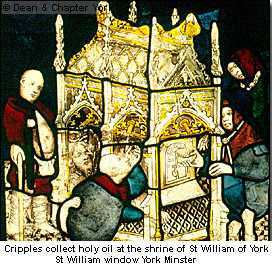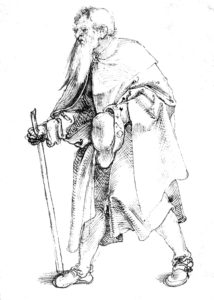A pilgrimage is a ritual journey with a hallowed purpose. Every step along the way has meaning. The pilgrim knows that life giving challenges will emerge. A pilgrimage is not a vacation; it is a transformational journey during which significant change takes place. New insights are given. Deeper understanding is attained. New and old places in the heart are visited. Blessings are received and healing takes place. On return from the pilgrimage, life is seen with different eyes. Nothing will ever be quite the same again.
Macrina Wiederkehr,
Behold Your Life.
Pilgrimages may be defined as journeys made to some place with the purpose of venerating it, or to ask for supernatural aid when you get there, or to discharge some religious obligation.
A pilgrim is someone who tries to obtain salvation of their soul through a physical journey. The pilgrimage needs to be a difficult journey to a usually distant and sacred place, in which the pilgrim can experience the presence of God, which will bring him or her closer to God so that they may easier find salvation.
Since in the Medieval times virtually everyone believed in God, very many of them were told to go on a pilgrimage by their local Priest, so that they could more easily find their way to heaven by experiencing God on the way there or perhaps on the way back. Such journeys as well as taking a long time, were also dangerous. By risking such dangers the pilgrim was brought closer to God.
The Church encouraged people to make pilgrimages to many of the special holy places. It was believed by many that if you prayed at these shrines you might be forgiven for your sins and have more chance of going to heaven. Others went to shrines hoping to be cured from an illness they were suffering from.
People would undertake a pilgrimage for many different reasons. The motivation for most would be a combination of three closely interrelated reasons.
Firstly, people desired to see and touch places and objects that were considered holy. This might involve travelling to view places associated with Jesus or it might be to view relics of a favourite saint. The purpose of this pilgrimage was to attempt to make the object of faith more real.
Secondly, people visited holy sites to make amends for having committed sin. By doing a pilgrimage as a penance, they hoped for forgiveness. These pilgrimages might have been for private reasons or for public reasons. They may have been voluntary or they may have been forced.
Finally, people went on a pilgrimage for the simple pleasure of travelling. In a time that offered very few opportunities to experience the world, pilgrimage was an exciting, challenging opportunity to leave village life behind.

A medieval picture of pilgrims on the way to Santiago
(i) The need to see and touch
The earliest pilgrimages of the fourth century to the Holy Land were based on a desire to see the places made famous by Bible stories. These might be described as ’empathetic’ pilgrimages, because the pilgrims literally wanted ‘to walk in the footsteps of the Master’. At the end of the fourth century Paulinus of Nola explained that:
‘No other sentiment draws men to Jerusalem then the desire to see and touch the places where Christ was physically present… Theirs is a truly spiritual desire to see the places where Christ suffered, rose from the dead, and ascended into heaven… The manger of His birth, the river of His baptism, the garden of His betrayal…the thorns of His crowning, the wood of His crucifixion, the stone of His burial: all these things recall God’s former presence on earth and demonstrate the ancient basis of our modern beliefs’
The desire to make the Christian faith more ‘real’, is something that all pilgrimages shared in common. To actually be in the presence of something ‘holy’; to see, or better still, touch something connected to a ‘holy’ event (the site of a miracle or the relic of a saint for example) made the believing much easier.

(ii) Penance: public and private motivation
The concept of penance is central to pilgrimage in the Middle Ages. If you do something wrong in the eyes of God you commit sin. In order to be forgiven and to avoid going to Hell, you must confess your sins and do a penance. Undertaking a pilgrimage as a penance would be compulsory and where you went would be decided for you. The more serious the sin, the further away you were sent. In Languedoc in France, pilgrimages were classified as minor, major or overseas.
From the 13th century, pilgrimage was also used as a punishment for crimes, particularly for scandalous crimes by the powerful and famous. Pilgrimages imposed by the law are called judicial pilgrimages. They were quite convenient, because the community got rid of the criminal without the cost of imprisonment. In 1319, Roger de Bonito was sent to Rome, Santiago and Jerusalem for the murder of a bishop. If you committed murder, it was common to have the murder weapon hung around your neck throughout the pilgrimage. If you were guilty of heresy, you might be expected to wear two yellow crosses on your front and back. As a consequence, you were not treated like other pilgrims but instead would be publicly humiliated. You would also be expected to collect signatures at all the shrines you visited, to prove you had been there. In particularly scandalous cases you might also be expected to undertake the pilgrimage barefoot or even naked!
For many pilgrims their motivation was very personal and completely voluntary. They might still be motivated by the need to do a penance, but the sin committed might be something only God would know about. The people would also go on pilgrimages to attain better health, for themselves or for their loved ones; for protection from enemies or to honour a vow. They wandered with the strong conviction that the relics or pictures of the saints kept at the place of miracle, would guarantee the presence of the saint itself. Pilgrims believed that the saints would perform miracles and cure diseases. They would pray to God or to a saint, promising that if the sick person recovered, they would make a pilgrimage to the grave of the saint afterwards to honour the vow, in praise. You could even go on pilgrimage to release a dead person from purgatory.
Eventually the pilgrimages became more regulated, connected to and motivated by the idea of the indulgence. According to this notion, the church held a treasury of extra ‘merits’ because Jesus and the saints had done so many good deeds. These extra merits would be given to whoever underwent a pilgrimage to a certain destination. The sins of the pilgrim could be forgiven to whatever extent the church desired. The pilgrims might hope to save their souls from eternal damnation in Hell or shorten or entirely escape purgatory. One general belief was that if you undertook a pilgrimage to the grave of St. James the Apostle in Santiago, your time in purgatory would be halved.

Pilgrims wore rough clothes and carried staffs
(iii) A sort of medieval tourism.
Medieval life for most was monotonous and strictly controlled. Most people never travelled outside of the region in which they were born. A pilgrimage was often the only chance people had to travel. A pilgrimage journey would often be dangerous, uncomfortable and boring, but it did give people the opportunity to be something they rarely were, strangers. (The word ‘pilgrim’ literally means ‘stranger’) In medieval villages everyone knew everyone else’s business. There was very little privacy.

For reasons of safety, Pilgrims tended to do the journey in groups. As well as providing opportunities to make new friends, it also meant there were plenty of parties or ‘making merry’.
Indeed, on arrival at the destination, pilgrims would often encounter a scene not too dissimilar to the modern day package holiday. Chances are they would be met on the roads outside the town by boys sent by hotel owners and innkeepers offering accommodation. Advertising billboards for accommodation could be found in surrounding villages, often many miles from the final destination. At the sanctuary itself, particularly the famous ones, pilgrims would be met by a large noisy crowd. There were many people making money from the pilgrims. Among the fellow pilgrims, there would be buskers and entertainers, market stalls and pickpockets, beggars and prostitutes. There were primitive postcards and souvenir pilgrim-badges to buy from licensed traders.
There were three pre-eminent pilgrimages in the Middle Ages:
- Jerusalem – first in importance, the place where Jesus lived, died and resurrected. It was expensive, very dangerous and difficult to reach and under Moorish domination for a long time.
- Rome – second in importance with the tombs of Saints Peter and Paul and many other Christian Martyrs. In the power struggles between the Pope and the European Kings a visit to Rome could become a dangerous political statement identifying the pilgrim as a papist.
- Santiago de Compostela – third in importance with the tomb of St James was relatively easy and safe to visit.
At the height of its popularity in the 11th and 12th centuries, each year more than half a million pilgrims used the road to Santiago de Compostela.
